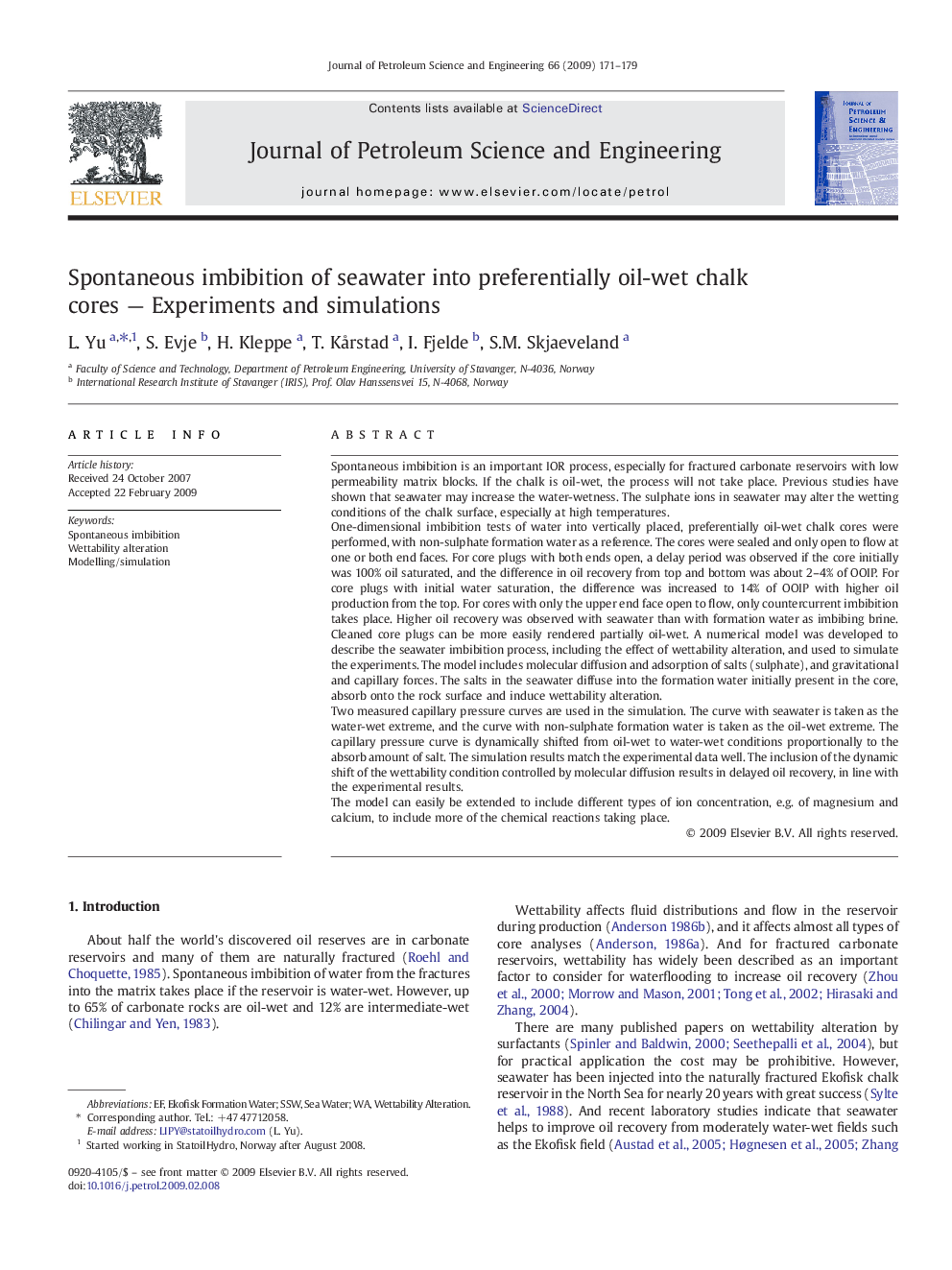| کد مقاله | کد نشریه | سال انتشار | مقاله انگلیسی | نسخه تمام متن |
|---|---|---|---|---|
| 1756161 | 1522877 | 2009 | 9 صفحه PDF | دانلود رایگان |

Spontaneous imbibition is an important IOR process, especially for fractured carbonate reservoirs with low permeability matrix blocks. If the chalk is oil-wet, the process will not take place. Previous studies have shown that seawater may increase the water-wetness. The sulphate ions in seawater may alter the wetting conditions of the chalk surface, especially at high temperatures.One-dimensional imbibition tests of water into vertically placed, preferentially oil-wet chalk cores were performed, with non-sulphate formation water as a reference. The cores were sealed and only open to flow at one or both end faces. For core plugs with both ends open, a delay period was observed if the core initially was 100% oil saturated, and the difference in oil recovery from top and bottom was about 2–4% of OOIP. For core plugs with initial water saturation, the difference was increased to 14% of OOIP with higher oil production from the top. For cores with only the upper end face open to flow, only countercurrent imbibition takes place. Higher oil recovery was observed with seawater than with formation water as imbibing brine. Cleaned core plugs can be more easily rendered partially oil-wet. A numerical model was developed to describe the seawater imbibition process, including the effect of wettability alteration, and used to simulate the experiments. The model includes molecular diffusion and adsorption of salts (sulphate), and gravitational and capillary forces. The salts in the seawater diffuse into the formation water initially present in the core, absorb onto the rock surface and induce wettability alteration.Two measured capillary pressure curves are used in the simulation. The curve with seawater is taken as the water-wet extreme, and the curve with non-sulphate formation water is taken as the oil-wet extreme. The capillary pressure curve is dynamically shifted from oil-wet to water-wet conditions proportionally to the absorb amount of salt. The simulation results match the experimental data well. The inclusion of the dynamic shift of the wettability condition controlled by molecular diffusion results in delayed oil recovery, in line with the experimental results.The model can easily be extended to include different types of ion concentration, e.g. of magnesium and calcium, to include more of the chemical reactions taking place.
Journal: Journal of Petroleum Science and Engineering - Volume 66, Issues 3–4, June 2009, Pages 171–179